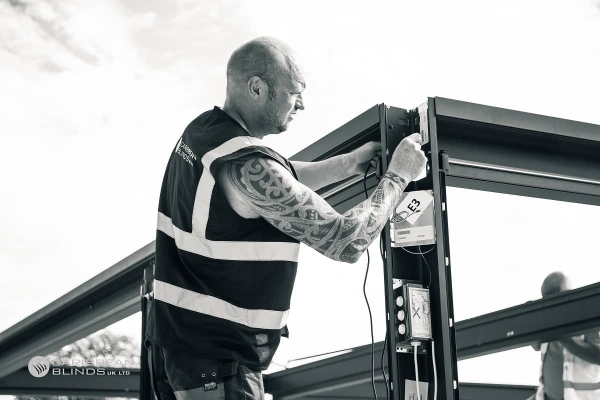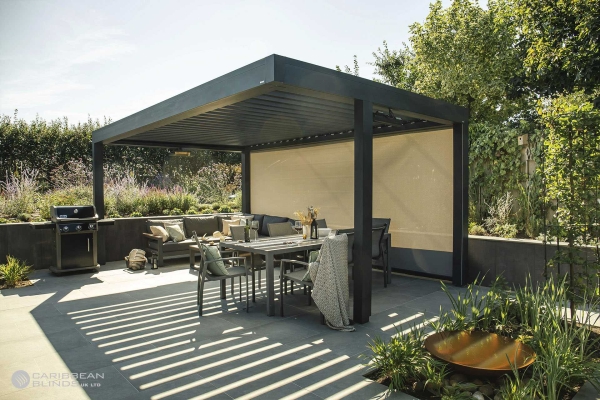
Following questions we were asked earlier this week pertaining to the various openness factors of the solar control mesh materials featured on our external roller blinds and tensioned roof blinds and what it all meant, we thought we’d post this comprehensive article to clarify.
The openness factor (OF), sometimes referred to as the openness co-efficient, refers to the percentage of perforations (holes) in a fabric against the total surface area of the fabric. It is an important factor in determining how much light will transmit through a fabric along with the level of outward vision that is maintained. Openness factors range from as low as 3% upto as much as 16% dependent on fabric range.
A material with a lower openness factor will typically have a lower light transmission level and therefore less view through, whereas a higher openness factor will give a better view through the material but also let more light through which could lead to glare issues.
The above photo shows the view through on a sunny day our most popular cb_600 range premium solar control mesh material which has a 5% openness factor and is available on any of our external roller blind models.
There are many additional factors that affect the transmission of light through a fabric along with outward visibility. These include:
- Colour of material
- Thickness of material
- Construction of material
- Coating on the material (ie reflective top coating)
- Conditions in the sky (ie cloud cover)
Our team of dedicated shading specialists are on hand to provide expert advice on the best range of materials for your application based on your specific needs and requirements from the solar shading system.




